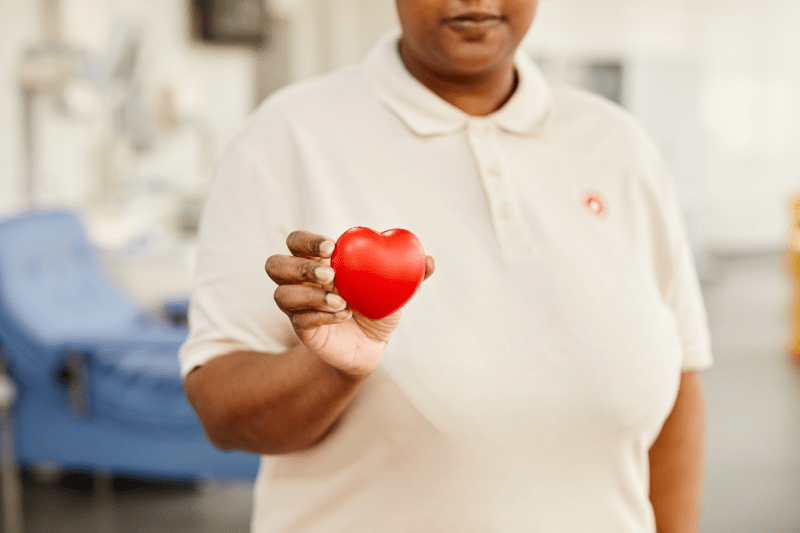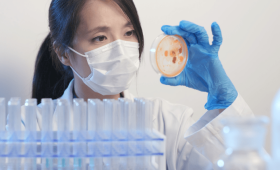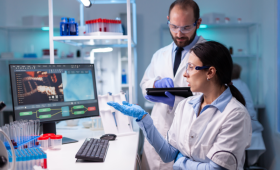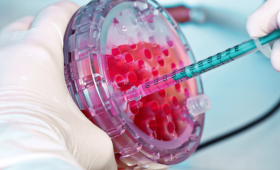Stem Cell Treatment for Heart Failure in Turkey
This guide explores the groundbreaking potential of stem cell therapy for heart failure in Turkey. Heart failure is a progressive disease that significantly diminishes the quality of life. Stem cell applications, offered as an addition to traditional treatments, hold promise for repairing damaged heart tissue and improving cardiac function. Before deciding on treatment, it is essential to thoroughly understand how this innovative method works, who is suitable for it, its potential risks, and the specialization in this field within Turkey. Armed with this information, patients will be ready to take the most informed and reliable steps for their care.
How Does Stem Cell Treatment Improve Heart Failure?
Stem cell therapy is an innovative approach that holds the potential to repair damaged heart muscle tissue. The applied stem cells can be delivered directly to the damaged area, where they may differentiate into new, healthy heart muscle cells (cardiomyocytes). However, the primary mechanism of action involves growth factors and cytokines secreted by the cells. These molecules trigger the heart’s own repair mechanism, help reduce scar tissue, and promote the formation of new blood vessels, significantly supporting the heart’s circulation and overall function. This process aims to enhance the heart’s pumping strength and improve overall cardiac efficiency over time.
What Is The Success Rate Of Stem Cell Treatment In Turkey?
Turkey demonstrates success in stem cell research and applications compliant with international standards. The success rate of stem cell treatment for heart failure varies depending on the patient’s heart failure stage, age, general health status, and the type of stem cell used. Success is typically measured by clinical data, such as the observed increase in left ventricular ejection fraction (LVEF) and improvement in the patient’s walking distance. Studies indicate that the treatment can provide an improvement of between 5% and 15% in heart function, which leads to a noticeable reduction in symptoms like shortness of breath and fatigue, significantly enhancing the patient’s capacity for daily activities.
Which Types Of Stem Cells Are Used For Heart Failure?
The most common types of stem cells used in heart failure treatment are Mesenchymal Stem Cells (MSCs) and autologous stem cells derived from the patient’s own bone marrow or adipose (fat) tissue. Mesenchymal Stem Cells (MSCs) are effective in creating a repair environment in damaged heart tissue due to their properties of immune system suppression and inflammation reduction. The use of the patient’s own cells (autologous) increases safety by eliminating the risk of bodily rejection. The choice of which cell type to use is determined based on the patient’s medical history and the scientific preferences of the specialists at the treating center.
How Soon After A Heart Attack Are Stem Cells Applied?
The most appropriate timing for applying stem cells after a heart attack is a critical factor influencing treatment efficacy. Generally, to achieve the best results, it is recommended that stem cell application be performed several weeks to a few months (usually 4 to 10 weeks) after the acute heart attack. During this period, the most active inflammatory process subsides, and the damaged area becomes more receptive to repair signals. However, the decision for treatment must always be personalized based on the patient’s general condition, the stabilization of heart functions, and the physicians’ risk assessment, ensuring optimal therapeutic window.
Who Is Suitable For Stem Cell Treatment?
Stem cell treatment is generally suitable for patients diagnosed with chronic stable heart failure whose symptoms persist despite traditional drug and surgical treatments. Candidates are usually expected to have a low ejection fraction (LVEF). However, conditions like active cancer, uncontrolled infections, or severe kidney or liver failure may preclude stem cell therapy. Before starting treatment, patients must undergo comprehensive cardiological, hematological, and immunological evaluation, and their suitability must be approved by a multidisciplinary team to ensure safety and potential benefit.
What Is The Stem Cell Application Procedure Like?
The stem cell application is typically a minimally invasive procedure. The process involves stages of harvesting the stem cells from the patient (bone marrow or fat tissue) and subsequently culturing and preparing them in the laboratory. The prepared cells are most commonly delivered for heart failure treatment via catheterization (an angio-like procedure) or by direct injection into the heart muscle during open surgery. These methods maximize the cells’ access to the damaged heart tissue, aiming for rapid healing by shortening the patient’s hospital stay and minimizing trauma.
What Is The Length Of Hospital Stay After Treatment?
The length of hospital stay after stem cell treatment varies depending on the method of application and the patient’s general health status. If the application was done via catheterization (angio), patients can usually be discharged after being kept under observation for one or two days. In cases applied via open surgery, this period may be longer. During the hospital stay, heart rhythm and general functions are closely monitored, pain management is provided, and the risk of possible early complications is evaluated. Rapid discharge is a significant comfort and advantage provided by minimally invasive methods.
Are There Permanent Side Effects Of Stem Cell Treatment?
Permanent side effects of stem cell treatment are very rarely observed, although this depends on the cell type used and the application method. The use of the patient’s own cells (autologous) virtually eliminates the risk of body rejection or severe allergic reactions. Short-term side effects may include pain at the application site, temporary fever, or fatigue. Although there are theoretical risks like the uncontrolled growth of cells, no definitive evidence of such serious complications has been reported in studies using mesenchymal stem cells; however, long-term follow-up remains crucial for continued safety monitoring.
What Evaluations Are Done Before Treatment?
A comprehensive and multidisciplinary evaluation is performed before treatment to determine the patient’s suitability. This process includes a detailed cardiological examination (Echocardiography for Ejection Fraction measurement), angiography to show coronary artery patency, extensive blood tests to check for tumors or infections, and an internal medicine consultation to evaluate general health status. It is also important that the patient is psychologically prepared for the process. These meticulous evaluations aim to maximize the treatment’s safety and chance of success by identifying and mitigating all possible risks.
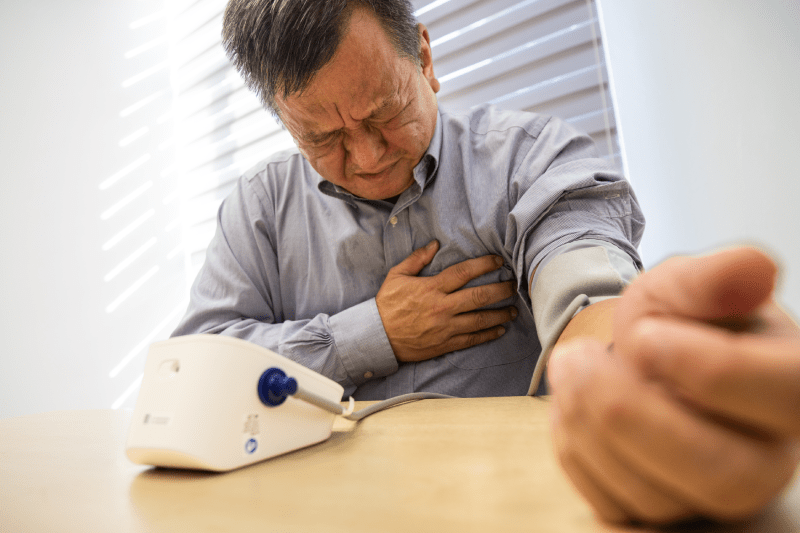
Is The Stem Cell Application A Painful Procedure?
The stem cell application is generally a procedure with minimal levels of pain. The area where the cells are harvested from the body (bone marrow or fat tissue) is anesthetized under local anesthesia, and the patient may only feel a slight pressure during this phase. The catheterization procedure, during which the cells are injected into the heart, is also performed under local anesthesia and usually does not cause pain. A short-term, slight ache may be felt at the application site after the treatment, but this condition is easily controlled with standard pain relievers and resolves quickly.
Do Stem Cells Replace Heart Failure Medications?
No, stem cell therapy generally does not replace the standard drug treatment used for heart failure; rather, it should be considered a supportive complementary treatment. Medications are vital for reducing the heart’s load, controlling symptoms, and slowing the disease’s progression. Stem cells help optimize the effect of medications by repairing damaged tissue and improving function. After treatment, physicians may adjust drug dosages or types according to the patient’s condition, but the complete cessation of drug therapy rarely occurs.
Is Stem Cell Treatment Legal In Turkey?
Yes, stem cell treatment applications in Turkey are performed only in authorized and accredited centers within the framework of strict ethical and legal regulations determined by the Ministry of Health. Turkey adheres to international standards in stem cell applications and has a legal framework that prioritizes R&D studies. These legal regulations aim to ensure patient safety, guarantee the quality of the cells used, and prevent exceeding ethical boundaries. It is of great importance for patients to ensure that the center they choose for treatment has all the necessary legal permissions.
When Do The Effects Of The Treatment Start To Be Seen?
The effects of stem cell treatment are not seen immediately as they depend on the cells settling into the damaged area and initiating the repair process. Significant clinical improvements are usually observed after 3 to 6 months. During this period, the cells start to heal the heart tissue by secreting growth factors and supporting new blood vessel formation. Patients can typically notice this improvement as an increase in walking distance, a reduction in shortness of breath, and a rise in general energy levels. The final results may take up to a year to be fully assessed.
In Which Cases Can Stem Cell Treatment Be Repeated?
Whether stem cell treatment can be repeated depends on the benefit the patient derived from the first treatment, their general condition, and the characteristics of the cell type used. If partial improvement was achieved in the first treatment and the patient has the potential to receive additional benefit, repetition of the treatment at intervals of a few years may be considered by specialists. The decision to repeat must be individually planned based strictly on objective cardiological test results (such as Ejection Fraction measurements) and changes in the patient’s quality of life.
Is There A Risk Of Stem Cells Causing Damage To Heart Tissue?
The risk of stem cells directly causing damage to heart tissue is very low, especially when the patient’s own cells (autologous) are used. However, temporary heart rhythm disturbances (arrhythmia) can rarely be triggered during the injection of cells into the heart. An experienced team is equipped to manage these rhythm disturbances immediately. Although micro-damage due to the pressure applied or the carrier substance used during the injection of stem cells is a theoretical risk, these risks are clinically negligible in specialized centers.
How Is Long-Term Follow-Up Of Stem Cells Conducted?
Long-term follow-up of stem cell treatment is vital for both assessing the efficacy of the treatment and monitoring possible late side effects. This follow-up includes regular cardiological examinations (Echocardiography, ECG), blood tests (especially cardiac biomarkers), and patient quality-of-life questionnaires for the first year after treatment. In the long term, follow-up usually continues once a year. Successful centers remain in contact with their patients even 5-10 years after treatment to continue collecting long-term safety and efficacy data, contributing to medical knowledge.
In Which Other Heart Diseases Can Stem Cell Treatment Be Used?
Stem cell treatment shows potential in other heart diseases besides heart failure treatment. Promising studies exist, especially in reducing damage after myocardial infarction (heart attack), treating ischemic cardiomyopathy (heart muscle disease due to reduced blood flow), and certain peripheral artery diseases (vascular occlusion). However, applications outside of heart failure are generally still in the clinical research or experimental stages, requiring more evidence before being accepted as routine treatment.
What Services Are Offered To Patients Coming From Abroad For Treatment?
Comprehensive health tourism services, extending beyond the medical procedure, are offered to patients coming from abroad for stem cell treatment in Turkey. These services include VIP transfers from the airport, luxury accommodation options during the treatment period, multi-lingual interpreting support, and personal patient coordination throughout the entire treatment process. These all-inclusive packages aim to eliminate the logistical difficulties patients may face in a foreign country, allowing them to focus entirely on the treatment and a comfortable recovery process.
How Long Does The Stem Cell Harvesting Procedure Take?
The procedure for harvesting stem cells from the patient generally takes a short time, although this varies according to the source used. The procedure for obtaining bone marrow (usually from the hip bone) can take 30 to 60 minutes and is performed under local anesthesia or light sedation. The process of harvesting fat tissue (similar to liposuction) may take slightly longer. The most important goal during this procedure is to obtain a sufficient number of high-quality stem cells. After harvesting, the cells are transferred to a special laboratory environment to be prepared for injection into the heart.

What Factors Determine The Cost Of Treatment?
The cost of treatment varies depending on many complex factors. The main cost drivers include: The type of stem cell used (autologous or allogeneic), the cell culture process in the laboratory, the interventional method of application (catheterization or surgery), the additional intensive care or follow-up duration required due to the patient’s general health status, and the scope of the included health tourism package (transfer, accommodation, etc.). Prices are determined in direct proportion to the center’s technological infrastructure and the experience of the expert team.
What Are The Advantages Of Stem Cell Treatment For Heart Failure?
The most significant advantages of stem cell treatment for heart failure are that it can be applied using a minimally invasive method and its potential to improve heart functions. The treatment can reduce patients’ symptoms like shortness of breath and fatigue by repairing damaged tissue, thereby enhancing their quality of life. Furthermore, when the patient’s own cells are used, the risk of body rejection is almost non-existent. This method can offer a bridge therapy for patients awaiting a heart transplant or an option for patients whose condition is not suitable for surgery.
Are Lifestyle Changes Necessary After Stem Cell Treatment?
Yes, healthy lifestyle changes are absolutely necessary even after stem cell treatment. While the treatment helps repair damaged tissue, to stop the progression of heart failure and prevent new damage, the patient must completely quit smoking and alcohol consumption, adhere to a heart-healthy diet low in salt and fat, and continue regular exercise under medical supervision. These lifestyle changes are fundamental factors supporting the long-term success of the treatment.
What Are The Alternatives If The Treatment Fails?
If stem cell treatment fails to show the expected success, traditional treatment options are still available for patients. These include optimizing drug therapy, device therapies such as cardiac resynchronization therapy (CRT), and surgical options like ventricular assist devices (VAD). As a final and ultimate resort, the option of heart transplantation can be evaluated. Treatment failure should not discourage the patient; rather, it should be seen as an opportunity to continue therapy through other conventional means.
How Can Stem Cells Be Delivered To The Heart?
Three main methods are used to deliver stem cells to the heart: Intracoronary injection (via catheter into the coronary arteries), intramyocardial injection (directly into the heart muscle), and intravenous (IV) injection (via the vein). The intracoronary method is the most commonly used, allowing cells to reach the damaged area with minimal invasion. The intramyocardial method provides a more targeted application during open surgery. The intravenous method, though the easiest, is the least preferred due to the risk of a large portion of the cells being retained in the lungs.
Should Medications Used Before Treatment Be Discontinued?
It is strictly not recommended to discontinue or change the dosage of heart failure medications (beta-blockers, ACE inhibitors, diuretics, etc.) used before treatment; these drugs are vital for the stabilization of heart failure. However, blood thinners (e.g., Aspirin, Plavix) may need to be temporarily discontinued or changed shortly before the application, under the supervision of a cardiologist, to reduce the risk of catheterization. All medication changes must be managed by the specialist physicians who will apply and follow the stem cell treatment.
Why Might Heart Failure Progress Despite Treatment?
Heart failure may progress despite stem cell treatment due to the patient’s underlying other health issues (uncontrolled diabetes, hypertension, active smoking) or inadequate adherence to lifestyle rules. Furthermore, the efficacy of stem cell therapy can vary individually, and some patients’ damaged heart tissue may not exhibit the expected healing response. The ultimate goal of the treatment is not to fully normalize heart function, but to slow the rate of disease progression and improve the quality of life.
Does Stem Cell Treatment Eliminate The Need For Heart Transplantation?
Stem cell treatment may postpone or reduce the need for heart transplantation in some patients with heart failure, but it cannot be said to eliminate this need entirely. The improvement in heart function provided by the treatment can stabilize patients on the heart transplant waiting list or allow them to live for many years without needing a transplant. It offers the most promising results when applied in the early or moderate stages of heart failure, supporting the heart’s natural healing capacity.
How Long Do Stem Cells Remain Active In The Body?
How long stem cells remain active in the body is a complex issue that varies depending on the cell type and the application site. While some of the injected stem cells may be eliminated from the body within weeks, a small portion that survives, particularly Mesenchymal Stem Cells (MSCs), can continue their paracrine effects (secreting growth factors) by remaining active for months. The repair and healing process in the heart depends on the long-term activity of these cells and the permanence of the natural repair mechanisms they trigger.
What Additional Treatments Are Used In Conjunction With Stem Cell Treatment?
Additional supportive treatments are frequently used to enhance the efficacy of stem cell therapy. Foremost among these is the optimization of drug therapy aimed at reducing inflammation and supporting heart function. Furthermore, some centers may offer supportive methods such as special nutritional supplements or hyperbaric oxygen therapy to accelerate the healing process and increase blood flow. A holistic approach is adopted to maximize the success of the treatment.
Is Anesthesia Used During Stem Cell Application?
Yes, local anesthesia and/or light sedation are generally used during stem cell application for patient comfort and safety. The bone marrow or fat tissue regions where the cells are harvested are locally anesthetized. During the injection into the heart via catheterization, the patient may remain awake, but light sedation (a sleep-like state, as commonly known) can be provided for relaxation. The application is not a surgical procedure requiring general anesthesia where the patient is completely unconscious.
What Are The Effects Of The Treatment On The Immune System?
A significant property of Mesenchymal Stem Cells (MSCs) is their ability to modulate (regulate) the immune system. This means the cells can reduce inflammation and suppress the body’s rejection response against foreign cells. This effect both promotes healing by reducing chronic inflammation in the damaged heart tissue and reduces the risk of rejection, especially when allogeneic (taken from someone else) stem cells are used. This immunomodulatory feature makes stem cell therapy an attractive option for heart failure.

Are There Financing Options To Reduce The Cost Of Treatment?
Health centers in Turkey may offer various financing and package options to reduce the cost of treatment, especially for patients coming from abroad. These options may include all-inclusive packages covering accommodation and transfer costs, some flexibility in the payment plan, or direct billing with contracted international insurance companies (rarely). The most appropriate way to make the cost suitable for the patient’s budget is to have detailed discussions with the center’s finance department at an early stage.
How Is The Process Of Storing And Transporting Stem Cells Managed?
The process of storing and transporting stem cells requires high precision and meticulousness to maintain their viability. After harvesting, the cells are cultured in special laboratories and stored using a freezing process called cryopreservation. During transport, the cells are quickly delivered to the application center in special cold chain transport containers (usually liquid nitrogen tanks), protected against temperature changes. This process must be managed in accordance with international standards, and the loss of cell viability must be minimized.
What Are The Travel Restrictions After Treatment?
Travel restrictions after stem cell treatment are generally short-lived and depend on the patient’s overall recovery speed. If the application was performed via catheterization, patients can usually travel by plane 2-3 days after the treatment. However, for long flights, it is recommended to wear compression stockings and take frequent walking breaks to reduce the risk of blood clots. Patients should avoid making long-term travel plans without obtaining doctor’s approval to ensure they are fully stabilized.
What Is The Expected Maximum Improvement With Stem Cell Treatment?
The expected maximum improvement with stem cell treatment is a significant increase in the heart’s pumping function (Ejection Fraction – LVEF) and a noticeable reduction in the patient’s symptoms (shortness of breath, fatigue). Maximum improvement is scientifically defined as a 10-15% increase in LVEF value, generally due to the reduction of scar tissue in the damaged area of the heart and the effect of new blood vessel formation. This increase means the patient can perform their daily activities much more comfortably, and their quality of life approaches previous normal levels.
At Which Stage Of Heart Failure Is Treatment Most Effective?
Stem cell treatment has the potential to be most effective in the advanced but reversible stages of heart failure, meaning moderate to advanced stages (NYHA Class II-III). Its effect may be limited when the damage to the heart muscle is very recent or minimal, while its potential effect decreases in the final stages (NYHA Class IV) where the damage is irreversible. The optimum efficacy of the treatment is observed in stages that allow some viable tissue in the heart and enable the stem cells to trigger the repair process.
What Is The Differentiation Capacity Of Stem Cells Within The Heart?
Although the differentiation capacity of stem cells within the heart is still a subject of debate among researchers, it is thought that cells like Mesenchymal Stem Cells (MSCs) theoretically have the potential to differentiate into new heart muscle cells (cardiomyocytes). However, the primary clinical benefit of the cells comes not from direct differentiation, but from their ability to reduce inflammation in the damaged area and trigger the heart’s own healing mechanisms through the paracrine factors (growth factors and cytokines) they secrete.
Heart failure treatment is a constantly evolving field, and stem cell therapy offers a promising, personalized solution in this area. Working with an experienced center that adopts the most accurate scientific and ethical approaches when planning your treatment is critically important.
To discover Turkey’s expertise in stem cell therapy and the most suitable, reliable treatment options for you, you can contact Cure Holiday.
